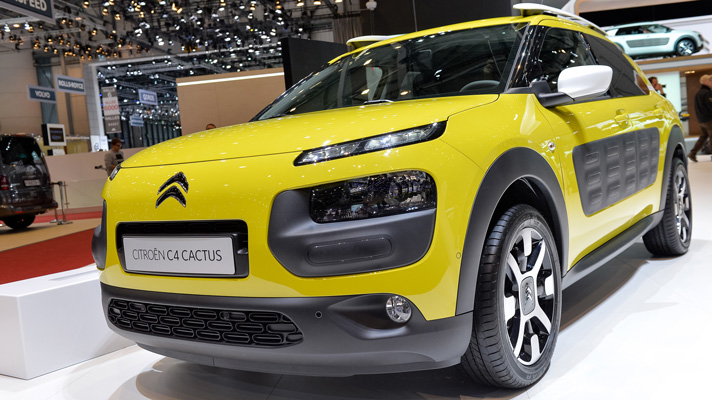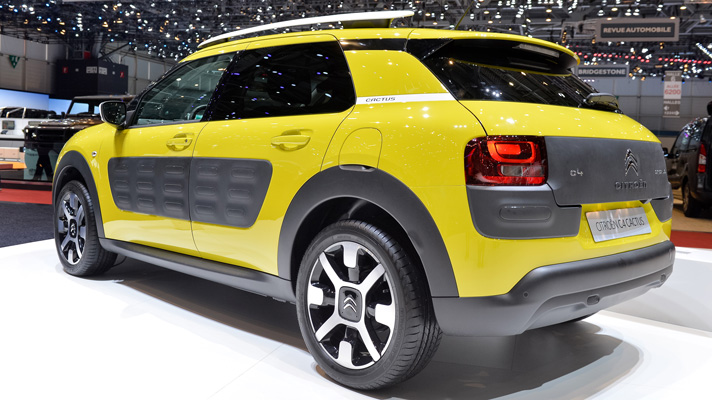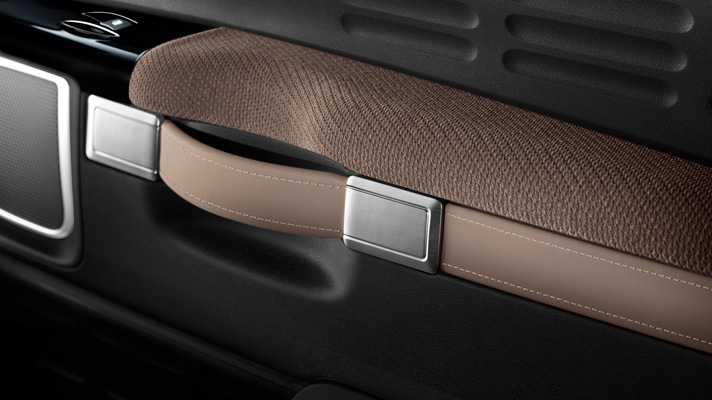
Keep calm: it's the Citroen C4 Cactus
Citroen's Cactus was a remarkable concept car. Even more amazing, it will make it onto the road looking almost intact. It goes into production this summer as the C4 Cactus, and you can buy it in the UK from autumn.
Not only the looks, but the philosophy of the concept car has also been carried through. Er... philosophy? How very French and up-itself. Are we to believe the C4 Cactus sits around in smoky cafes and pontificates on the meaning of life over an absinthe? Come on, it's a Focus-sized hatchback.
OK, maybe 'philosophy' is putting it a bit strong. But among its peers, the C4 Cactus really does live by a rather different motto.
It's supposed to lower your heartbeat. So the design is soft-looking, without being cutesy. It gives an aura of protection. Inside, the furniture and architecture encourage calm sociability. The gadgetry is easy to use, and in any case there's less of it than rivals tout. There are no options for lane assist or active cruise, while the instruments are few and simple.
The most notable feature outside is the 'airbump' plastic on the doors. It's a layer of rubbery-feeling material with actual blisters of gas. This literally bubble-wraps the car, making a surface that's resistant to dings and scratches. That and the SUV-style wheel-arch plastic mean it shouldn't be worrying to drive in narrow streets and car parks. The airbumps come in four colours, so there's loads of scope for customisation, as people want these days.
Citroen's next next radical step was abandon the assumption that more poweeeeer is always better. The C4 Cactus's most forceful engine is a 110bhp turbo three-cylinder petrol.
Don't click away just yet. Small, smooth, spirited turbo triples are a good thing. More important, because of the low power, there was no need to use heavy suspension or drivetrain. Top speed is just 118mph, so the brakes and cooling apertures are lightweighted and reduced.
Continuing the lightweight, simple theme, they didn't even bother with the new Citroen EMP2 platform, because that's engineered for the mass of seven passengers and big diesel engines in the C4 Picasso. Instead the C4 Cactus has a lengthened and strengthened (using aluminium and high-strength steel) version of the DS3/Peugeot 208 platform. Which is light, cheap and well-proven.
And so with this feathery triple under the bonnet, the C4 Cactus weighs spot-on a tonne. The lightest Focus is nearly 30 percent lardier. So, even though the engineers say they set up the C4 Cactus for an old-school soft French ride, it should be agile and nippy because it's so light. It's also low in drag, and that too helps consumption.
Inside, it's about lounging room as well as simplicity. The simple LED panel for the instruments takes up little room and is cheaper than actual mechanical dials. The passenger airbag has been kicked upstairs to a position behind the sun visor. This leaves space for a huge bin of a glovebox.
Top Gear
Newsletter
Thank you for subscribing to our newsletter. Look out for your regular round-up of news, reviews and offers in your inbox.
Get all the latest news, reviews and exclusives, direct to your inbox.
The rear seat doesn't split-fold or slide, so it's much lighter and cheaper. The rear doors have hinged opening windows, not wind-down ones. That saves much cost, and 11kg, versus an electric set. Plus it allows for huge door bins. They look like they'd take a couple of magnums of Bordeaux each.
The money saved has been poured back into the car where you can see and feel and enjoy it. That's genuine stitching on the dash and doors. The upholstery reminds us of natty French tailoring. All versions have LEDs inside and out.
See, it's different. Generally speaking, the car industry assumes that what you want is more complication, more gadgetry, more speed and grip. So the majority of base model hatchbacks have these things stripped out, and are specifically designed to look impoverished. That way you're nudged into paying more to climb the range.
Citroen had been doing that, but found it wasn't as good as its rivals at selling high-end kit or big-tyred aggression. So the designers and marketing people paused, and decided to ask people some canny questions. Not what they wanted but what they actually couldn't do without.
That became the baseline. Citroen figured that by leaving out the inessential, they could concentrate on making the essential better. And it's not just about physical substance, it's a state of mind.
Trending this week
- Car Review
BMW 1 Series
- Top Gear's Top 9
Nine dreadful bits of 'homeware' made by carmakers










